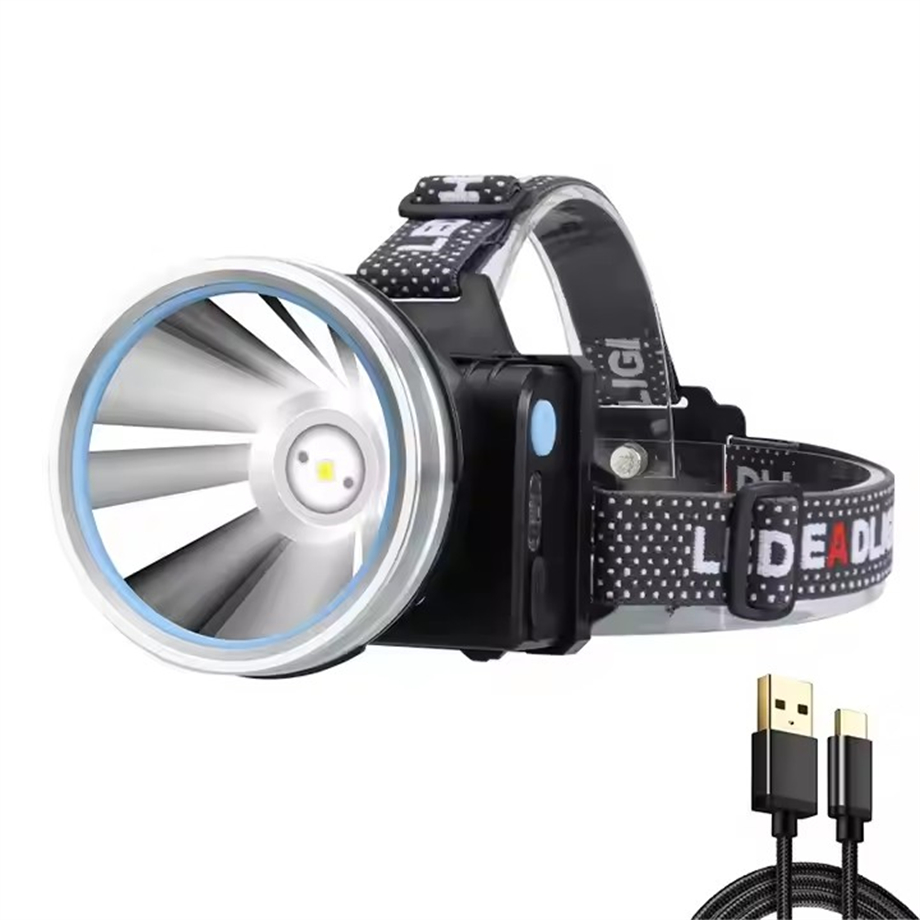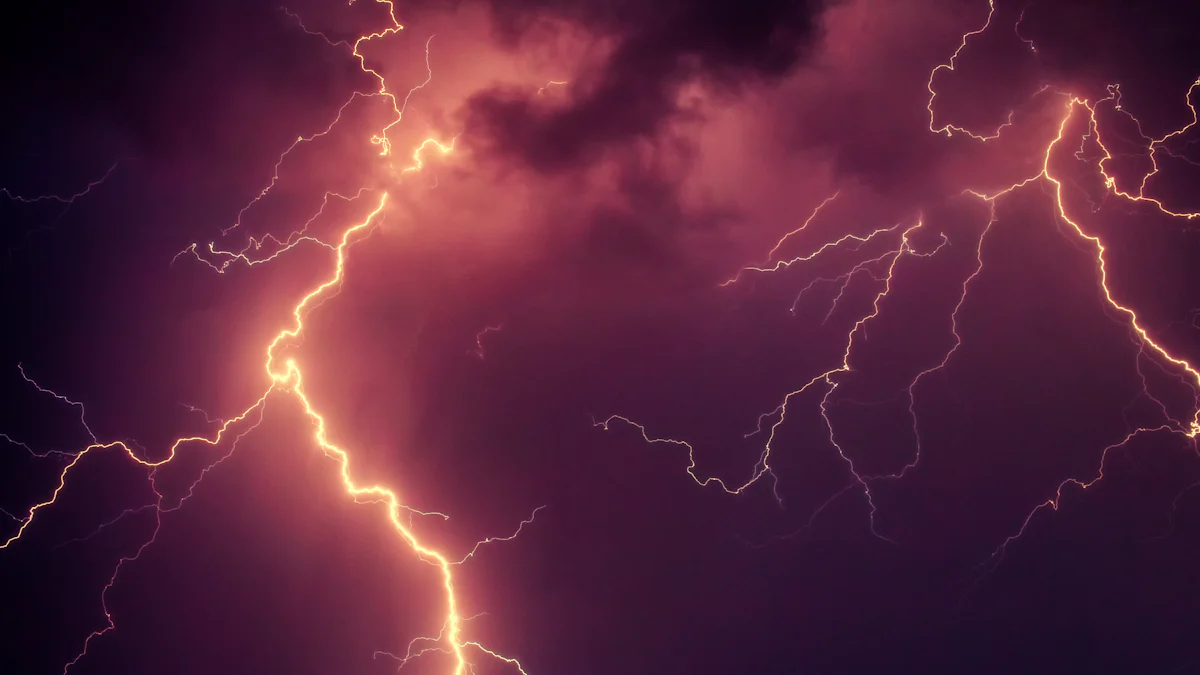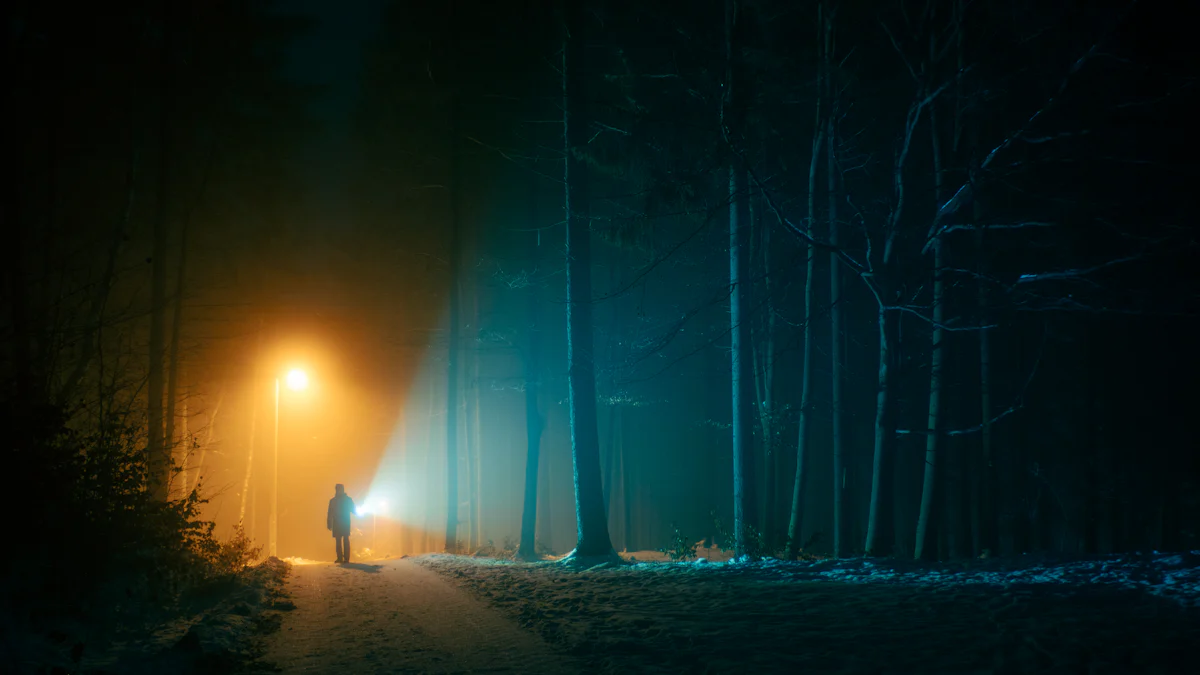How the Middle East's Harsh Environments Influence Flashlight Technology and Features

The Middle East's harsh environments significantly influence flashlight technology and features, presenting unique challenges for their design. With extreme heat, sandstorms, and limited water resources, there is a demand for durable and efficient tools. Heat-resistant materials and advanced technology are essential to ensure flashlights perform reliably in these conditions. Rising temperatures, driven by climate change, amplify the need for adaptation in flashlight design. These devices must withstand heat while conserving energy to support public health and human health. Additionally, air pollution and infectious risks further highlight the importance of reliable lighting. Understanding how the Middle East's harsh environments influence flashlight technology and features makes these tools essential for navigating the region's extreme climate and protecting vulnerable communities.
Key Takeaways
Pick flashlights made from strong materials like magnesium or titanium. These materials last longer in very hot places.
Get flashlights with high IP ratings to block dust and water. An IP rating of 6+ stops sand and dust, and IPX5+ keeps water out.
Use lithium-ion batteries instead of alkaline ones. Lithium-ion batteries work better in heat and have a bigger range.
Choose flashlights with brightness you can adjust. This helps save battery or make the light brighter when needed.
Think about rechargeable or solar-powered flashlights. These are eco-friendly and work well in areas without much electricity.
The Impact of Heat on Flashlight Design

Heat-Resistant Materials in Flashlights
The Role of LED Steel Flashlights
In regions like the Middle East, where extreme heat is a daily reality, the materials used in flashlights play a critical role. The led steel flashlight market has grown significantly due to its ability to withstand high temperatures. Steel provides durability and structural integrity, making it ideal for harsh environments. However, other materials also contribute to heat resistance.
Material | Properties | Performance Under Heat |
|---|---|---|
Magnesium Alloy | Lightweight, durable, excellent heat dissipation | Ideal for outdoor activities, prevents overheating |
Copper | Excellent thermal conductivity | Effectively dissipates heat, extends flashlight lifespan |
Titanium | Lightweight, strong, highly resistant to corrosion | Durable in harsh environments, maintains integrity under heat |
Carbon Fiber | High strength, low weight, highly resistant to corrosion | Withstands extreme temperatures, suitable for harsh use |
These materials ensure that flashlights, including led steel flashlights, remain functional even in extreme heat.
Heat Dissipation Mechanisms for Longevity
Heat dissipation is essential for maintaining the lifespan of your flashlight. Advanced led steel flashlights often incorporate heat sinks made from copper or magnesium alloy. These mechanisms draw heat away from the LED, preventing damage and ensuring consistent performance. Proper heat management also reduces the risk of overheating, which can compromise the flashlight's efficiency and your safety.
Battery Performance in High Temperatures
Overheating Protection Features
High temperatures can degrade batteries quickly. Overheating protection features in modern flashlights safeguard against this issue. These systems monitor internal temperatures and automatically shut down the flashlight if it overheats. This feature not only protects the battery but also ensures your flashlight remains reliable during critical moments.
Lithium-Ion vs. Alkaline Batteries in Extreme Heat
Choosing the right battery is crucial for performance in extreme heat. Lithium-ion batteries outperform alkaline batteries in such conditions.
Comparison Factor | Lithium Battery | Alkaline Battery |
|---|---|---|
Operating Range | Typically operates from -20°C to 60°C | Poor adaptability, not tolerant to extreme temperatures |
Thermal Stability | Good thermal stability, not easily affected by temperature changes | Temperature-sensitive, easily affected by temperature fluctuations |
Lithium-ion batteries offer better thermal stability and a wider operating range, making them ideal for the Middle East's climate. Alkaline batteries, on the other hand, struggle to maintain performance in extreme heat.
High temperatures, accelerated by climate change, demand flashlights with robust materials, efficient heat dissipation, and reliable batteries. These features ensure your flashlight remains a dependable tool, even in the most challenging conditions.
Sand and Dust: A Major Challenge

The Middle East's sandy and dusty environments pose significant challenges for flashlight performance. Sandstorms and fine dust particles can infiltrate and damage internal components, reducing the lifespan of your flashlight. To combat this, manufacturers have developed innovative designs that prioritize dustproofing and lens durability.
Dustproof Flashlight Designs
Importance of IP Ratings
When choosing a flashlight for dusty conditions, you should pay attention to its IP rating. This rating measures the level of protection against solid particles like sand and dust. A higher IP rating ensures better resistance.
IP Rating | Protection Level Against Solids |
|---|---|
0 | No protection |
6 | Full protection from all solids |
Scale | 0 to 6 |
An IP rating of 6 guarantees complete protection from dust, making it ideal for the Middle East's harsh environment. This feature ensures your flashlight remains functional even during intense sandstorms.
Sealed Buttons and Ports for Protection
Sealed buttons and ports are essential for keeping dust out of your flashlight. These features prevent fine particles from entering and damaging the internal circuitry. Rubberized seals and gaskets are commonly used to create a tight barrier. This design not only enhances durability but also ensures reliable performance in dusty conditions.
Lens Durability in Sandy Environments
Scratch-Resistant Coatings
Sandy environments can easily scratch flashlight lenses, reducing visibility and effectiveness. Scratch-resistant hard coatings protect the lens surface from damage. These coatings enhance durability, ensuring your flashlight remains clear and functional even after prolonged exposure to sand.
Anti-Static Materials to Minimize Dust Accumulation
Dust accumulation on the lens can obstruct light output and reduce efficiency. Anti-static materials help repel dust, keeping the lens clean for optimal performance. This feature is particularly useful in regions where sandstorms are frequent. By minimizing dust buildup, you can maintain consistent lighting and avoid frequent cleaning.
Dustproof designs and durable lenses are crucial for flashlights in sandy climates. These features not only improve performance but also contribute to your health by ensuring reliable lighting during emergencies. As climate change intensifies sandstorms, investing in a well-designed flashlight becomes even more important.
Water Scarcity and Flashlight Efficiency
Water shortages in the Middle East create unique challenges for flashlight design. Flashlights must perform reliably in areas where water is scarce and where exposure to water, such as during unexpected rain or flooding, can still occur. Manufacturers have developed waterproofing and energy-efficient features to address these needs.
Waterproofing Features for Flashlights
IPX Ratings and Their Relevance
Understanding IPX ratings helps you choose a flashlight that meets your needs in environments with water shortages. These ratings indicate how well a flashlight resists water exposure. The table below explains the levels of protection:
IPX Rating | Description | Application |
|---|---|---|
IPX4 | Can withstand water splashes and light rain for 10 minutes. | Suitable for moderate weather conditions but not for heavy rain. |
IPX5 | Protected against low-pressure water jets from any direction. | Ideal for outdoor use in rain and snow. |
IPX6 | Resists high-pressure water jets. | Good for areas with a risk of water damage, like coastal regions. |
IPX7 | Immersible in water up to 1 meter for 30 minutes. | Excellent for camping and hiking. |
IPX8 | Subjected to rigorous water resistance testing. | Best for extreme conditions where prolonged exposure to water is expected. |
For the Middle East, flashlights with IPX5 or higher are ideal. These ratings ensure durability even in unexpected water exposure, protecting your flashlight and maintaining its functionality.
Submersion vs. Splash Resistance
You should consider whether you need splash resistance or full submersion protection. Splash-resistant flashlights, like those with IPX4 ratings, handle light rain or accidental spills. Submersible flashlights, such as those rated IPX7 or IPX8, are better for activities like hiking near water sources or during emergencies involving flooding. Choosing the right level of protection ensures your flashlight remains reliable in any situation.
Energy Efficiency for Prolonged Use
LED Technology for Low Power Consumption
LED technology plays a crucial role in energy efficiency. LEDs consume less power compared to traditional bulbs, allowing your flashlight to last longer. This feature is especially important in areas with water shortages, where conserving resources like batteries aligns with sustainable practices. LEDs also generate less heat, making them safer to use in hot climates.
Solar-Powered Flashlights for Remote Areas
Solar-powered flashlights offer a practical solution for regions with limited access to electricity. These flashlights use sunlight to recharge, reducing the need for disposable batteries. In areas facing water shortages, solar-powered options provide a sustainable and cost-effective alternative. They ensure you have reliable lighting without relying on external power sources, making them ideal for remote locations.
Waterproofing and energy efficiency are essential features for flashlights in the Middle East. These advancements not only protect your flashlight from water damage but also ensure prolonged use in areas with water shortages. By choosing the right flashlight, you can navigate challenging environments while supporting sustainable practices.
Ruggedness and Adaptability in Harsh Conditions
Durable Flashlight Construction
Shockproof and Drop-Resistant Designs
Flashlights in the Middle East must endure rough handling and accidental drops. Shockproof and drop-resistant designs ensure your flashlight remains functional even after impacts. Manufacturers achieve this by using materials like stainless steel and aluminum alloy, which provide excellent structural integrity. These materials absorb shock effectively, preventing internal damage to components like the LED or battery. Whether you’re hiking rugged terrain or working in demanding environments, these designs guarantee reliability.
Corrosion-Resistant Materials for Longevity
Corrosion-resistant materials are essential for flashlights exposed to harsh conditions. Sand, dust, and humidity can corrode inferior materials, reducing the lifespan of your flashlight. High-quality options like titanium, magnesium alloy, and carbon fiber resist corrosion while maintaining durability. The table below highlights materials commonly used in durable flashlight construction:
Material | Properties |
|---|---|
Magnesium Alloy | Lightweight, durable, excellent heat dissipation. Ideal for outdoor activities. |
Copper | Excellent thermal conductivity, corrosion-resistant, antimicrobial properties. |
Titanium | Lightweight, strong, highly resistant to corrosion. Suitable for harsh environments. |
Carbon Fiber | High strength-to-weight ratio, corrosion-resistant, withstands extreme temperatures. |
Stainless Steel | Long-lasting durability, impact-resistant, maintains structural integrity. |
Aluminum Alloy | Lightweight, excellent heat conduction, prevents overheating during prolonged use. |
These materials ensure your flashlight withstands the Middle East’s extreme climate while maintaining performance.
Versatile Lighting Modes
Adjustable Brightness Levels for Different Needs
Adjustable brightness levels allow you to adapt your flashlight to various situations. Lower brightness settings conserve battery life, making your flashlight last longer. Higher brightness levels provide intense illumination when needed, such as during emergencies or outdoor activities. This feature enhances usability and ensures your flashlight meets your specific needs.
SOS and Strobe Functions for Emergencies
SOS and strobe functions are lifesaving features in flashlights. These modes help you signal for assistance during emergencies, especially in remote areas. The strobe function can disorient potential threats, adding a layer of safety. In the Middle East’s vast deserts or during sandstorms, these lighting modes become invaluable tools for navigation and survival.
Multiple lighting modes, combined with durable construction, make flashlights indispensable in harsh environments. The led steel flashlight market continues to innovate, offering advanced features that prioritize your safety and health. These advancements ensure your flashlight remains a reliable companion, even in extreme conditions influenced by climate change.
User-Centric Features for the Middle East
Portability and Lightweight Flashlights
Compact Designs for Easy Carrying
In the Middle East, you often need a flashlight that is easy to carry. Compact designs make this possible. These flashlights fit comfortably in your pocket or bag, ensuring you can take them anywhere. The led steel flashlight market has embraced this trend, offering smaller models without compromising durability. Compact flashlights are ideal for outdoor activities, emergencies, or even daily use. Their lightweight nature reduces strain, making them perfect for long journeys or extended use in challenging environments.
Hands-Free Options like Headlamps
Hands-free lighting options, such as headlamps, provide unmatched convenience. These devices allow you to focus on tasks without holding a flashlight. Whether you are hiking, repairing equipment, or navigating during a sandstorm, headlamps ensure consistent lighting. Many models in the led steel flashlight market feature adjustable straps and angles, giving you flexibility. This hands-free approach enhances safety and efficiency, especially in situations where you need both hands free.
Long-Lasting Performance
Extended Battery Life for Remote Areas
In remote areas, reliable lighting is essential. Flashlights with extended battery life ensure you have light when you need it most. The led steel flashlight market has introduced advanced battery technology to meet this demand. These flashlights can last for days on a single charge, reducing the need for frequent replacements. This feature is particularly important in regions where access to electricity is limited. By choosing a flashlight with long-lasting performance, you can navigate remote areas with confidence.
Rechargeable Flashlights for Cost-Effectiveness
Rechargeable flashlights offer a cost-effective and sustainable solution. These models eliminate the need for disposable batteries, saving you money and reducing waste. Many rechargeable flashlights now include USB charging ports, making them compatible with solar chargers. This innovation aligns with the growing need for sustainable technology in the face of climate change. The led steel flashlight market continues to innovate, providing rechargeable options that combine efficiency with durability. These flashlights not only support human health by reducing environmental impact but also ensure reliable lighting in critical situations.
You’ve seen how the Middle East's harsh environments influence flashlight technology and features. Extreme heat, sandstorms, and water scarcity demand innovative designs. These advancements, like heat resistance, dustproofing, and waterproofing, ensure your flashlight remains reliable. They also protect your health by addressing challenges like air pollution and infectious risks. As climate change intensifies, these tools become even more vital for public health and human health. Investing in advanced flashlights supports adaptation to the region’s climate and safeguards vulnerable communities.
FAQ
What is the best flashlight material for extreme heat?
Materials like magnesium alloy, titanium, and carbon fiber perform well in high temperatures. They resist heat and maintain durability, making them ideal for the Middle East's climate.
How do IP ratings help when choosing a flashlight?
IP ratings indicate a flashlight's resistance to dust and water. For sandy or wet environments, choose a flashlight with a high IP rating, such as IP6X for dustproofing or IPX7 for water resistance.
Why are rechargeable flashlights better for remote areas?
Rechargeable flashlights reduce dependency on disposable batteries. They save money, minimize waste, and often include solar charging options, making them perfect for areas with limited electricity access.
How do flashlights protect your health in harsh environments?
Reliable flashlights ensure safety during emergencies, sandstorms, or power outages. They provide consistent lighting, reducing risks like accidents or exposure to harmful conditions.
What features make a flashlight energy-efficient?
LED technology and solar charging enhance energy efficiency. LEDs consume less power and last longer, while solar-powered flashlights offer sustainable lighting solutions in remote or resource-scarce areas.
See Also
Essential Factors to Consider When Choosing Flashlight Suppliers
Understanding Manufacturing Processes and LED Innovations in Flashlights
Examining Various Scenarios for Flashlight Applications
Forecasting Future Trends in Flashlight Demand Across Markets
Comprehensive Overview of Flashlight Production and Quality in China
About US
Follow Us
Hello,Friend,
I am Mary from Helius, we are manufacturer of LED lighting products with more than a decade of experiences.
We offer hot selling products in market and guarantee the quality with competitive cost.
Let’s have more discussion on your inquiry.
Or you can reach out me via what’s up/tele gram +8618123952945 if it’s favorable to you.
Address
4th Floor, Building A16, Intelligent terminal industrial park of Silicon Valley, Dafu Industrial Zone,Guanlan, Shenzhen, 518110 China
Contacts
mary@heliuslights.com
heliuslight04@hotmail.com
+0086 18123952945
